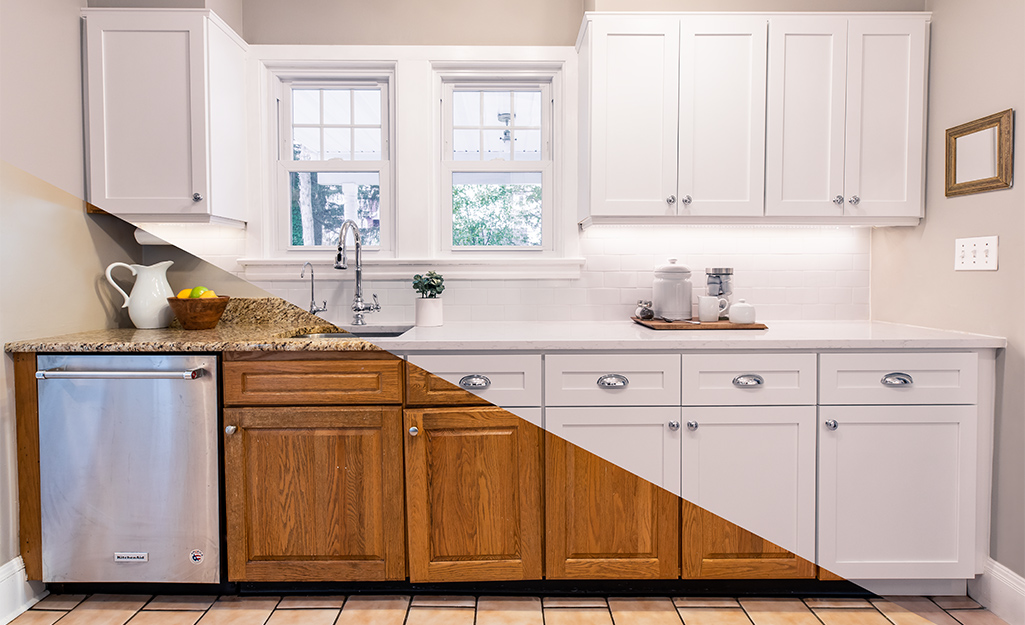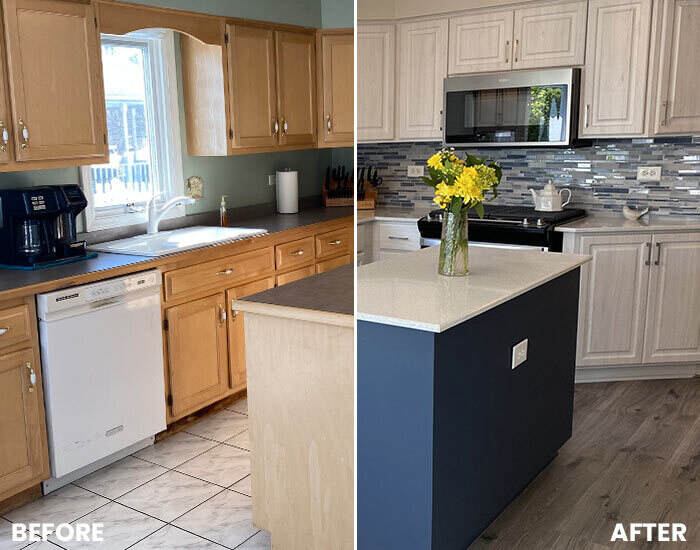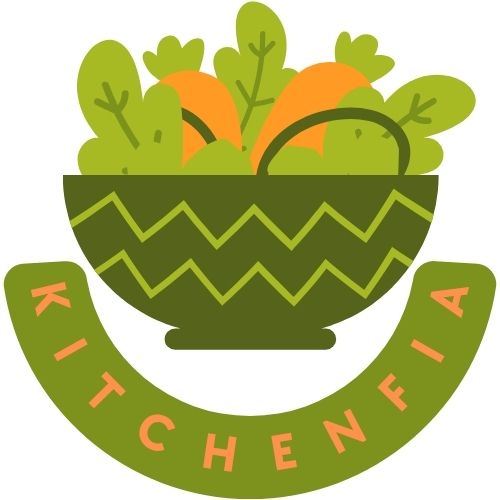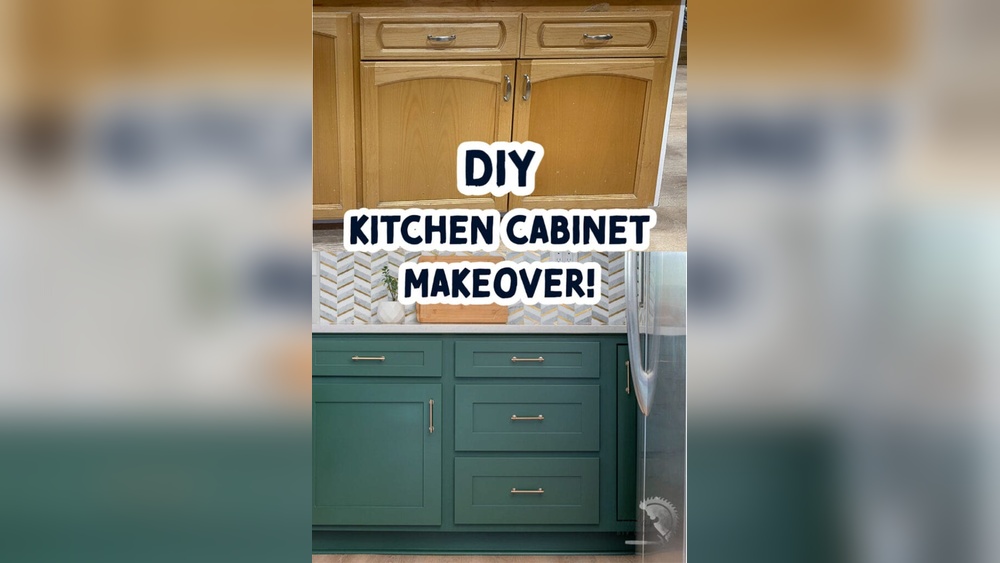Are your kitchen cabinets looking tired or outdated, but you’re not ready for a full remodel? You’re in luck—refacing your kitchen cabinets could be the perfect solution.
It’s a smart way to give your kitchen a fresh, modern look without the hassle and high cost of replacing everything. Imagine transforming your space quickly, saving money, and avoiding the mess of a major renovation. In this guide, you’ll discover simple, step-by-step tips on how to reface your kitchen cabinets yourself.
By the end, you’ll have the confidence to take on this rewarding project that can completely change the feel of your kitchen. Ready to see how easy it can be? Let’s dive in!
When To Reface Cabinets
Good cabinet structure means the boxes and shelves are still strong. No cracks or water damage should be present. Solid cabinets can support new doors and veneers easily.
A need for updated look arises when cabinet fronts look old or worn. Changing doors and surfaces gives your kitchen a fresh style without full replacement.
Choosing refacing is a budget-friendly option. It costs less than buying all new cabinets. Materials and labor are cheaper since the base cabinets stay.
Refacing also allows a faster renovation. Work takes less time compared to removing and installing new cabinets. This means less mess and quicker kitchen use.
:max_bytes(150000):strip_icc()/cabinet-refacing-demystified-1822044-v3-e2dabd6aceb543fca7fd1302e9aecf3b.png)
When To Avoid Refacing
Damaged cabinet boxes are a major reason to avoid refacing. If the wood is rotten, warped, or cracked, refacing won’t fix the structure. The cabinets need to be stable to hold new doors and veneers well.
Layout changes also make refacing a poor choice. Refacing only covers the outside; it does not change the cabinet shape or size. If you want to move cabinets or change the kitchen flow, a full remodel is better.
High-end kitchens often require more than new faces. Custom designs, premium materials, and updated features cannot be achieved by refacing alone. A full remodel can meet these needs and increase home value.
Refacing fits best with a limited budget. If your budget allows for a full remodel, that will give you more options and a longer-lasting result. Refacing saves money but limits changes.
Materials And Quality
Cabinets can be made from solid wood, plywood, MDF, or particleboard. Solid wood lasts longer but costs more. Plywood is a good balance of strength and price. MDF and particleboard are cheaper but less durable.
Choosing the right material affects your cabinet’s durability and look. High-quality materials may cost more but last many years. This makes them a smart long-term investment.
Cabinet colors and styles should match other renovations in your kitchen. This keeps your space looking harmonious and well-planned. Think about your countertops, floors, and walls. Coordinating all elements creates a balanced and appealing kitchen.

Preparation Steps
Start by cleaning all cabinet surfaces. Use a mild detergent and a soft cloth to remove grease and dirt. Check for any damages like cracks or holes. Fill small holes with wood filler and sand smooth once dry.
Next, remove all doors and hardware carefully. Keep screws and hinges in a labeled container to avoid losing them. This step makes it easier to work on the cabinet frames.
Measure each cabinet carefully. Note the height, width, and depth. Write measurements down clearly to help order new doors or panels. Accurate measuring ensures a good fit for the new cabinet faces.
Choosing Refacing Materials
Veneers are thin slices of real wood. They give a natural and warm look. Laminates are plastic-coated sheets. They come in many colors and patterns. Laminates are easy to clean and resist scratches.
Choosing between veneers and laminates depends on your style and budget. Veneers feel more authentic but cost more. Laminates are cheaper and very durable.
New doors and drawer fronts change the cabinet’s face. They refresh the kitchen without replacing the whole cabinet. You can select from wood, MDF, or thermofoil materials. Each has different looks and costs.
Hardware options like handles and knobs add style and function. Metals like brushed nickel, bronze, or chrome are popular. Picking the right hardware ties the whole look together.
Applying Veneers And Panels
Start by cleaning the cabinet surfaces to remove dirt and grease. Sand them lightly for better veneer adhesion. Use a contact cement or wood glue to attach the veneers smoothly. Press the veneer firmly to avoid bubbles or gaps.
Trim extra veneer using a sharp utility knife. Cut slowly along the edges for a clean line. Sand edges gently to remove roughness and create a seamless look. Use wood filler if needed to fix small gaps.
Finish edges with matching trim strips or edge banding. Attach these strips using glue or small nails. This step hides raw edges and gives a professional finish.
Installing New Doors
Measure each cabinet opening carefully. Use a tape measure to get width and height. Write down the numbers clearly. Double-check measurements to avoid mistakes. Accurate measurements help new doors fit perfectly.
Attach hinges to the new doors before hanging. Use screws that match the hinge holes. Place hinges where old doors had them, or adjust for new styles. Tighten screws well to keep doors secure.
Hang the doors on the cabinet frames. Check the alignment by closing and opening doors. Adjust hinge screws to move doors up, down, left, or right. Make sure doors sit flush and open smoothly. Small changes can make a big difference.
Adding Final Touches
Install the toe kicks carefully to cover cabinet bases. They hide gaps and give a clean look. Use nails or glue to fix them firmly.
Adding molding and trim enhances the cabinet edges. Choose styles that match your kitchen’s design. Cut pieces to size and attach them neatly.
Hardware like handles and knobs finishes the refacing job. Pick new hardware that fits your style and fits the holes. Screw them tightly for durability.
Cost Considerations
Material costs for refacing cabinets vary widely. Wood veneers, laminates, and thermofoil are common options. Wood veneers tend to be more expensive but offer a natural look. Laminates and thermofoil are budget-friendly choices that still look good. The cost depends on the quality and style you pick. On average, materials can range from $1,500 to $5,000 for a typical kitchen.
Labor vs DIY is a big factor in total cost. Hiring professionals brings expertise and faster results. Labor costs usually add 50% or more to material costs. Doing the work yourself saves money but requires time and skill. Mistakes may increase costs later, so consider your comfort with tools and techniques.
Potential savings come from avoiding full cabinet replacement. Refacing costs about 30-50% less than new cabinets. It also takes less time, reducing disruption. Many homeowners find refacing a cost-effective way to update their kitchen’s look without breaking the bank.

Maintenance Tips
Clean refaced cabinets gently using a soft cloth and mild soap. Avoid harsh chemicals and abrasive scrubbers that can damage the surface. Wipe spills immediately to prevent stains and water damage.
Handle wear and tear by fixing small scratches with touch-up markers or paint. Replace loose hinges and knobs to keep cabinets functional. Regular checks help catch damage early before it worsens.
| Signs to Refinish | Signs to Replace |
|---|---|
| Minor surface scratches or fading | Damaged or warped cabinet boxes |
| Loose or worn cabinet doors | Mold, water damage, or strong odors |
| Discoloration or dull finish | Need for new kitchen layout or design |
Frequently Asked Questions
Is It Worth It To Reface Kitchen Cabinets?
Refacing kitchen cabinets saves money and time by updating doors while keeping sturdy cabinet boxes. Choose refacing for solid cabinets needing a fresh look. Avoid if cabinets are damaged or you want a new layout. It offers a cost-effective, quick kitchen refresh without full replacement.
What Is The Best Material For Refacing Cabinets?
The best material for refacing cabinets is thermofoil. It offers durability, affordability, and a smooth, modern finish. Wood veneer is another great option for a natural look and long-lasting quality. Choose materials that resist moisture and wear for lasting cabinet beauty.
Can I Just Paint Over My Kitchen Cabinets Without Sanding?
You can paint kitchen cabinets without sanding if using a high-quality primer and paint designed for slick surfaces. Sanding improves paint adhesion and durability. Skipping sanding may cause peeling or chipping over time. For best results, lightly sand or use a deglosser before painting.
How Expensive Is It To Reface Kitchen Cabinets?
Refacing kitchen cabinets typically costs between $1,000 and $9,000. Prices vary by materials, labor, and kitchen size. It costs less than full cabinet replacement and offers a fresh look quickly.
Conclusion
Refacing kitchen cabinets gives your kitchen a fresh look without full replacement. It saves money and time, making it a smart choice for many. Ensure your cabinet boxes are strong before starting the project. Use proper tools and follow steps carefully for best results.
Small changes can make a big difference in your kitchen’s appearance. Enjoy your updated space that feels new and inviting. Keep maintenance simple to prolong the beauty of your refaced cabinets. A little effort brings great satisfaction and improves your home’s value.

